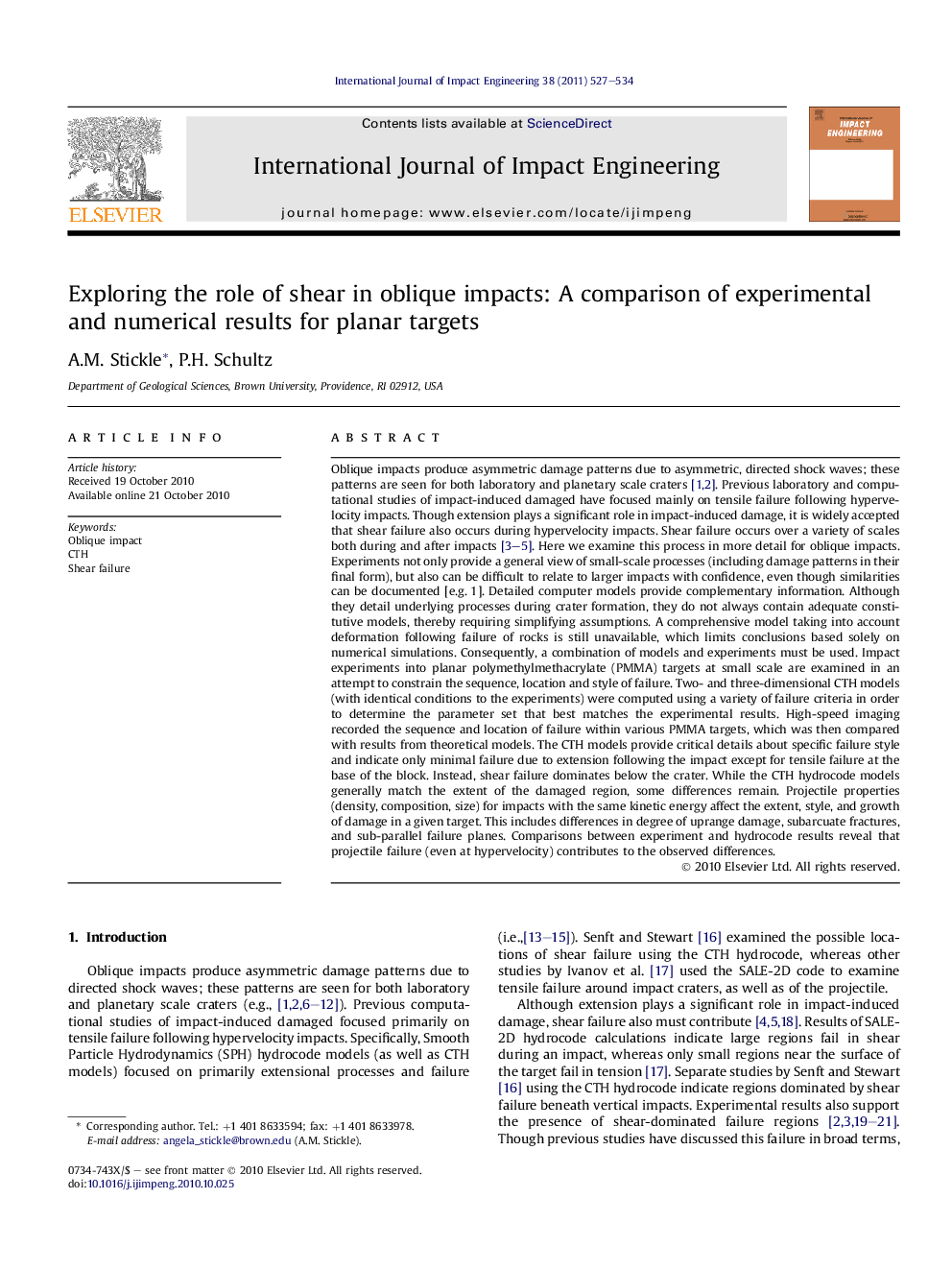| کد مقاله | کد نشریه | سال انتشار | مقاله انگلیسی | نسخه تمام متن |
|---|---|---|---|---|
| 778634 | 1464117 | 2011 | 8 صفحه PDF | دانلود رایگان |

Oblique impacts produce asymmetric damage patterns due to asymmetric, directed shock waves; these patterns are seen for both laboratory and planetary scale craters [1] and [2]. Previous laboratory and computational studies of impact-induced damaged have focused mainly on tensile failure following hypervelocity impacts. Though extension plays a significant role in impact-induced damage, it is widely accepted that shear failure also occurs during hypervelocity impacts. Shear failure occurs over a variety of scales both during and after impacts [3], [4] and [5]. Here we examine this process in more detail for oblique impacts. Experiments not only provide a general view of small-scale processes (including damage patterns in their final form), but also can be difficult to relate to larger impacts with confidence, even though similarities can be documented [e.g. 1]. Detailed computer models provide complementary information. Although they detail underlying processes during crater formation, they do not always contain adequate constitutive models, thereby requiring simplifying assumptions. A comprehensive model taking into account deformation following failure of rocks is still unavailable, which limits conclusions based solely on numerical simulations. Consequently, a combination of models and experiments must be used. Impact experiments into planar polymethylmethacrylate (PMMA) targets at small scale are examined in an attempt to constrain the sequence, location and style of failure. Two- and three-dimensional CTH models (with identical conditions to the experiments) were computed using a variety of failure criteria in order to determine the parameter set that best matches the experimental results. High-speed imaging recorded the sequence and location of failure within various PMMA targets, which was then compared with results from theoretical models. The CTH models provide critical details about specific failure style and indicate only minimal failure due to extension following the impact except for tensile failure at the base of the block. Instead, shear failure dominates below the crater. While the CTH hydrocode models generally match the extent of the damaged region, some differences remain. Projectile properties (density, composition, size) for impacts with the same kinetic energy affect the extent, style, and growth of damage in a given target. This includes differences in degree of uprange damage, subarcuate fractures, and sub-parallel failure planes. Comparisons between experiment and hydrocode results reveal that projectile failure (even at hypervelocity) contributes to the observed differences.
Journal: International Journal of Impact Engineering - Volume 38, Issue 6, June 2011, Pages 527–534